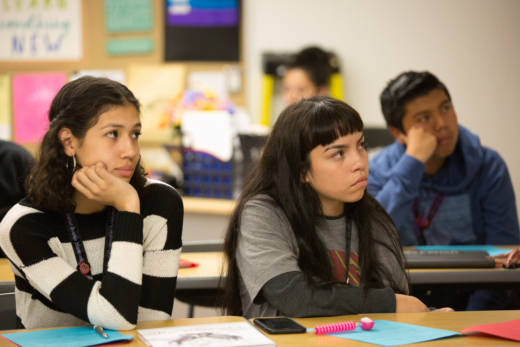Roberto Vega has taught at schools all over Los Angeles, but when he came to Social Justice Humanitas Academy he knew he’d found something special. Everything about how the school is structured and run is done with the best interests of students in mind. He liked it so much he decided to pull his son out of a popular high school located on a college campus and send him to Humanitas.
“I brought him here for 11th grade and immediately my wife noticed a difference,” Vega said. “She goes, ‘You know it’s weird, he doesn’t want to wear his hoodie anymore.’ He just seemed happier. He really came out of his shell. He got to showcase himself a lot more in the AP classes. He really did thrive here.”
Vega thinks that’s because of great teaching, but also the underlying vision of this school: help students become the best version of themselves. With that vision guiding every decision — from how to support students on academic probation, to hiring — Social Justice Humanitas has built a school where teachers’ voices are central, and everyone is looking out for one another.
The school and the systems that govern it were designed by teachers and have been led by them from the beginning. The founding group of teachers were tired of being told what to do and how to do it by people who were not in the classroom. They felt they knew what their students needed if only the administration would support them to do it.
“A lot of times in education, as teachers, we’ve been taught to wait for someone above us to tell us what to do,” said Jeff Austin, a founding teacher. “And make your plans according to the district or the state, and we were just like, we want to make plans according to our students.”


